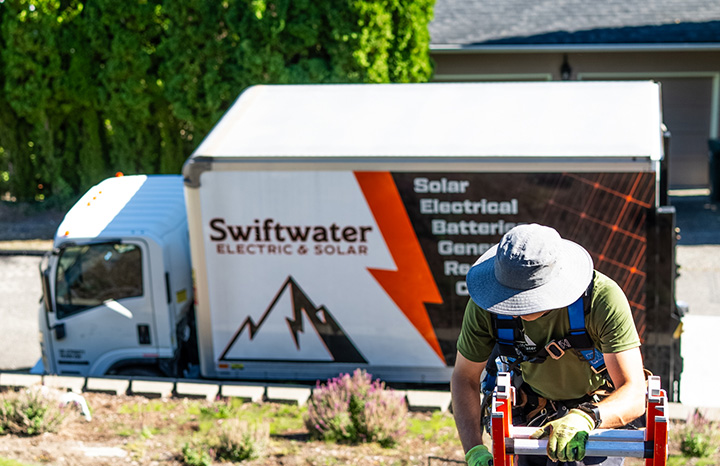Don't Wait Until Spring To Go Solar.
On the surface winter might seem like a strange time to think about going solar. After all, isn't solar all about sunshine?

Why You Shouldn’t Wait Until Spring to Go Solar in Northwest Washington.
If you live in Northwest Washington, you know the drill: gray skies, rainy days, and short winter afternoons. On the surface, it might seem like a strange time to think about going solar. After all, isn't solar all about sunshine?
While it’s true that solar panels need sunlight to generate electricity, fall and winter are actually ideal times to make the switch to solar. Here's why:
1. Shorter Days Don’t Mean Less Value
It’s a common misconception that solar doesn’t make sense in the Pacific Northwest because of the weather. But modern solar panels are far more efficient than they used to be. They still produce energy even on overcast days, and in many cases, cooler temperatures actually help them run more efficiently.
Besides, solar isn’t about just generating power day by day—it's about maximizing your savings over years. Solar works year-round, and your system will make plenty of energy during our long summer days to offset your winter usage.
2. Install Now, Be Ready for Spring Surge
Spring and summer are the busiest times for solar installers. That means longer wait times, tighter schedules, and the potential for delays. By starting your solar journey in the fall or winter, you're ahead of the rush. You’ll get better scheduling flexibility, more personal attention, and potentially quicker permitting and utility approval.
That means your system will be up and running before the high-production months hit—letting you start saving right when your panels can generate the most energy.
3. Winter Energy Bills Are No Joke
We use more electricity in the winter, whether it’s for lights, heating, or just staying cozy indoors. That often means higher power bills right when you'd rather be saving money. Getting solar in the off-season gives you the chance to start offsetting those winter energy costs sooner rather than later.
And with utility rates steadily climbing, every kilowatt-hour you produce yourself is one less you have to buy at an inflated price.
4. Take Advantage of Incentives Before They Change
Federal and local solar incentives can make a big difference in your total system cost and those incentives end 12/31/25. Fall is a great time to lock in current tax credits and rebates before the calendar flips. It also gives you time to plan financially and work with your installer to structure the best return on your investment.
5. You’re Investing in More Than Just Energy
Solar isn't just about saving money (though it does that). It's about gaining energy independence from the skyrocketing rates of the Utility Companies, increasing your home’s value, and making a tangible impact on the environment. And in the Pacific Northwest, where we value sustainability and natural beauty, it’s a step that aligns with the way many of us want to live.
The Bottom Line: Don’t Wait for the Sun
In Northwest Washington, waiting for the “perfect” sunny moment to go solar means missing out on months of savings, tax benefits, and renewable energy production. Fall and winter are the strategic seasons to act—so that when the long summer days arrive, your system is already working hard for you.
If you’ve been thinking about solar, don’t let the gray skies fool you. There’s no better time than now to start the process.







.jpg)
